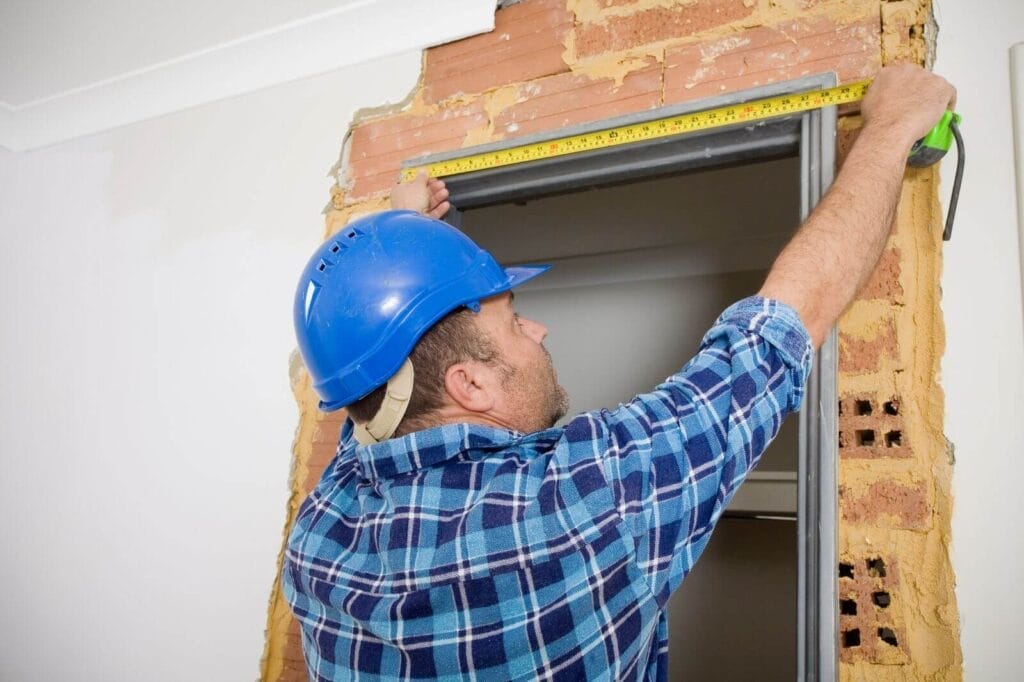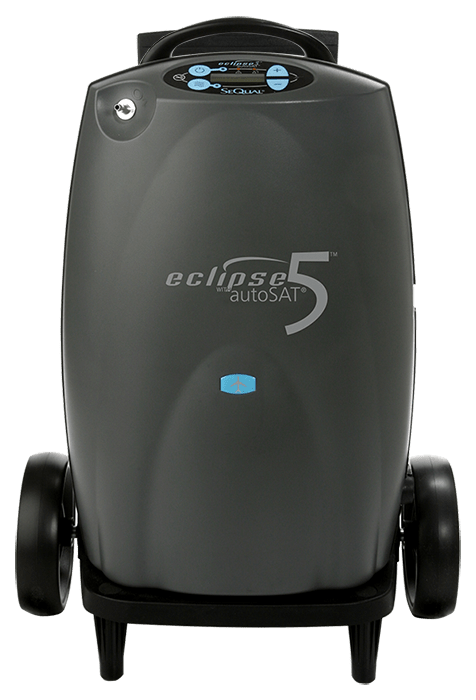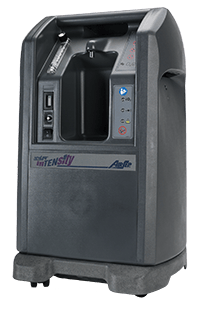[Last updated March 27, 2025]

As people age, most would prefer to stay in their homes for as long as possible. That idea — called aging in place — isn’t just about comfort. It’s also about maintaining independence and quality of life. But homes need upkeep and sometimes modifications to keep them safe and livable as our needs change. Unfortunately, home repairs for seniors can be costly, especially if they are on a fixed income. The good news is that there are several programs, both public and private, designed to help seniors make necessary home repairs or modifications. Here’s a look at some of the best options out there.
Rebuilding Together
Rebuilding Together is a national nonprofit that provides home repairs at no cost to eligible homeowners, many of whom are seniors or people with disabilities. Their focus is on health and safety — such as fixing hazards like broken steps, faulty wiring, and leaky roofs. Volunteers often do the labor, which helps keep costs down and allows the organization to stretch its resources. Eligibility usually depends on income, age, and location. The best way to apply is to visit their website and search for a local affiliate in your area. Each one sets its own guidelines and application procedures.
Area Agency on Aging
Your local Area Agency on Aging (AAA) is a great place to start when looking for help with home repairs. These agencies vary by state and county, but most offer referrals to home modification programs, grant opportunities, or even direct funding, in some cases.
For example, in Texas, the AAA program has 28 agency offices to assist with minor home repairs for seniors. Services can include plumbing fixes, electrical work, or installation of safety features like handrails. Eligibility is typically based on age and income. To find out what’s available near you, visit the Eldercare Locator (eldercare.acl.gov) and enter your zip code to find your local AAA.
Some AAAs also partner with state programs or local nonprofits, creating hybrid solutions that offer both funding and labor support. You might discover that your AAA can connect you with a community college carpentry program, a church volunteer group, or a state-funded senior home repair initiative.
Section 504 Home Repair program
Also known as the USDA Single Family Housing Repair Loans and Grants program, Section 504 is specifically geared toward low-income seniors living in rural areas. Homeowners aged 62 or older may qualify for grants of up to $10,000 to fix health and safety hazards. Loans of up to $40,000 are also available for other repairs.
Covered projects might include repairing roofs, fixing plumbing, replacing windows, or adding grab bars and ramps. The application is done through your local USDA Rural Development office, and you’ll need to meet income and residency requirements.
HUD Title 1 property improvement loans
The U.S. Department of Housing and Urban Development (HUD) spearheads the Title I program, which caters to homeowners looking to make property improvements but lack substantial home equity.
Depending on the loan amount and the nature of improvements, loans can be secured or unsecured. Secured loans require collateral, and unsecured loans do not. While loans for smaller, nonstructural modifications can be unsecured, larger loans for more extensive renovations typically must be secured.
Funds from this program can transform various areas of a home, including a much-needed HVAC system overhaul, bathroom renovations for enhanced accessibility, and complete kitchen modernizations.
Enhance your safety and comfort at home! Get a free quote on a walk-in tub today and discover loan options to make it an affordable reality. Take the step toward easier, safer bathing now!
HUD 203(k) rehabilitation mortgage insurance program
Tailored for individuals keen on purchasing or refinancing homes that demand repairs, the 203(k) rehabilitation mortgage insurance program combines the property’s purchase price and renovation costs into one consolidated mortgage.
Allowing the buyer to finance both the property acquisition and the required renovations simplifies the process of buying and renovating. The program encompasses a broad spectrum of home repairs, from foundational fixes and structural alterations to energy conservation improvements.
Those interested in these government programs should contact local USDA offices, HUD offices, or approved lenders specializing in these loans. Understanding eligibility, documentation, and application processes is crucial to use the full potential of these programs. Through their comprehensive support, these programs underscore a commitment to ensuring homes are safe and comfortable.
Medicaid’s Money Follows the Person program
Medicaid, a state and federal program offering medical insurance to eligible low-income individuals, also extends its reach to cover specific home modifications. These changes are especially significant for seniors, enabling them to age comfortably in familiar surroundings while maintaining independence and safety.
Money Follows the Person (MFP) is a Medicaid initiative that aims to counteract a significant issue: the institutionalization of elderly and disabled individuals. Recognizing the emotional and physical benefits of allowing seniors and those with disabilities to remain within their homes and communities, the program facilitates their transition from institutional settings, such as nursing homes, back to their homes or community-based residences.
Each state may have a unique name for this initiative, but the essence is the same. By providing financial support for necessary home modifications or equipment, the program ensures that homes are tailored to meet individual needs through improved mobility, safety, or overall accessibility. Covered modifications include ramps for wheelchair access, bathroom modifications for enhanced safety, stairlifts, doorway widening, or even specialized equipment for individuals with specific health conditions.
Take the first step to reclaiming your independence! Get a free quote on a stairlift today and explore affordable loan options to make your home safer and more accessible. Start your journey to greater mobility!
The first step for those interested in accessing Medicaid’s home modification programs is determining eligibility. Each state has specific criteria. Eligible individuals can contact their local Medicaid office or consult a Medicaid planner to get a clear picture of the programs available in their state and the application process.
Weatherization Assistance Program
The federal Weatherization Assistance Program, administered by the Department of Energy, helps low-income households reduce energy costs by improving home energy efficiency. While it’s not designed exclusively for seniors, older adults often qualify based on income and age. Repairs can include replacing insulation, sealing air leaks, and updating heating or cooling systems. These changes not only lower utility bills but also make homes more comfortable and safe.
To apply, contact your local community action agency or the state weatherization office. You’ll need to provide proof of income and possibly undergo a home energy audit.
Special assistance for Veterans
Veterans, having dedicated their lives in service to their country, deserve not just our respect and gratitude but also comprehensive support, especially when it comes to their housing needs. Recognizing this, various government-backed programs have been designed specifically to cater to the unique challenges and needs that Veterans might face, ensuring they can lead comfortable and dignified lives post-service.
Home Improvements and Structural Alterations grants
The Home Improvements and Structural Alterations (HISA) grant offers financial aid to Veterans to make necessary home modifications that improve disability access or address medical needs. Unlike some other grants, HISA is available to Veterans with both service-related and non-service-related disabilities, albeit with different funding caps. These grants can cover a wide range of improvements, from ramp installations and doorway widening to installing walk-in tubs or specialized shower systems.
HISA can be used in homes that are not owned by the Veteran, such as rentals or family members’ homes. The maximum grant amount varies depending on whether the disability is service-connected, with limits ranging from $2,000 to over $6,800. Veterans can apply by submitting VA Form 10-0103 through their local VA medical center.
Specially Adapted Housing grant
The Specially Adapted Housing (SAH) grant is designed to help Veterans with specific severe service-connected disabilities, such as the loss of use of both hands or severe respiratory injuries. The focus is on helping them live independently in a barrier-free environment.
The SAH grant can be used to construct or buy an adapted home or modify an existing home. This grant allows Veterans to modify their homes to accommodate their condition — for example, by building ramps, widening doorways, or lowering counters. Modifications can be comprehensive, addressing a range of disabilities.
Cash-out refinance loans
Cash-out refinance loans allow Veterans to refinance their existing mortgage into a government-backed mortgage or to draw upon their home’s equity. These loans are backed by the U.S. Department of Veterans Affairs (VA), which means they often come with favorable terms, such as competitive interest rates and no requirement for private mortgage insurance. Veterans can use the cash for many purposes, including home improvements.
Veterans interested in these programs should contact the VA or affiliated organizations for detailed information. It’s essential to understand eligibility criteria, required documentation, and the application process, which can vary across programs.
Final thoughts on home repair and modification assistance for seniors
The bottom line is that there are more resources out there than most people realize. Whether you’re a senior trying to maintain your home or a family member looking to help, it’s worth taking the time to explore all the options. The application processes can take time and paperwork, but the reward is peace of mind and a safer, more comfortable living space.
Start with your local Area Agency on Aging, then branch out to federal programs and nonprofit options. It might take a few phone calls, but the help is there, and it could make all the difference in helping you or a loved one stay in their home longer.








